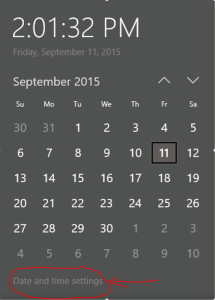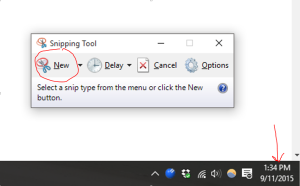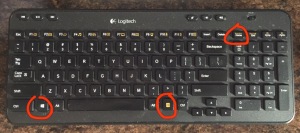This past May I graduated with my PhD. I initially typed that sentence as “I finished…”. But, truly, like a wedding is the formal start of a marriage, the conferment of the PhD degree is just the formal start of a writing career. In the months since I walked across the stage I’ve been trekking through the bog of drafts, revised drafts, and revisions of revised drafts in the pursuit of the research Holy Grail… the peer reviewed paper in an impactful journal.
For me, the most challenging aspect of completing my dissertation, and revising it into publications, has been keeping track of my source material. Over the past five years I’ve tried, discarded, and modified countless ways of tracking the dozens then hundreds, maybe thousands, of references that inform my writing. It turns out, the reading is the easy part. Finding that idea kernel a month later in mounds of paper can take a frustrating amount of time. Enough time that a tracking system became essential. I needed a system that was flexible yet powerful – that would get me to the key ideas easily. I tried color coding, accordion folders, foot high paper piles… until I burned through reams of paper and boxes of laser toner. But, as the piles grew, and the more I organized, the harder it became to find the ideas I was seeking.
I like reading on paper. I like highlighting. I like making notes in the margin. I adore index cards. But, I was drowning in paper. I had to change.
I’ve long read novels on a Kindle. However, I resisted electronic reading for “serious” work. I couldn’t see how it would work for me. But, I had an iPad mini. And, I saw how my students were using the app GoodNotes for annotating class materials. So, I gave it a try. What a game changer!! Going electronic meant giving up my trusty paper, but pdf scans still look like paper. I thought it would mean giving up my fun highlighters and pens. No – Good Notes has fun highlighters and pens.
Okay, so I was making good progress plugging along with my electronic reading – but as I mentioned above, the reading is the easy part. I still had to figure out how to index the key insights for easy retrieval. I had to let go of my trusty index cards, and move to trust a citation manager. I tried a few and found Zotero had the most reliable sync. It allows notes and tags – but they do require some maintenance to be maximally useful. Initially my Zotero was kind of a mess. The resources were entered by the system through a Google Chrome extension button, but I didn’t maintain it beyond that. It was useful for making reference lists, absolutely, but it didn’t help me track my ideas.
My organizational break through came through an ordinary tool that turned out to have extraordinary usefulness – Google Drive. When I realized that Good Notes and Google Drive can talk, I had found the workflow key. I could let go of trying to keep all the reference plates spinning in my head, and trust the system. And, it also gave me a way to pair my reading habit with my Zotero organization, building a stronger system.
The system:
- First, I download the article. I typically search through Google Scholar, because it’s linked to my school library account. EBSCO and other search engines are also options, depending on what paywalls I need to go through.
- I name files of downloaded articles very specifically so I can quickly identify duplicates: topic, last name of first author, year of publication, title
- Next, I load the pdf into Google Drive.
- When I sit down to read, I pull articles from Google Drive into my iPad GoodNotes app.
- As I read in GoodNotes, I highlight and annotate the articles electronically – directly on the pdf pages.
- I also highlight any supporting references cited by the authors that may provide further insight
- I then upload the annotated pdf back into Google Drive.
- Next, I use folders to keep order in my Google Drive.
- I upload each article into the topic folder it matches. I’ve found it’s best to do this soon after reading, or I get bogged down
- Within the topic folder I have three subfolders.
- 1. One for the unannotated original article copy
- 2. One for the annotated copies of articles I’ve read but won’t be citing in my manuscript
- 3. One for the annotated copies that I am likely to cite in the manuscript
- For the articles I plan to use, I add their citation into Zotero
- In Zotero you can go wild with folders and tags, but that’s a topic for another day
- I add my notes from my reading into the notes tab in Zotero – this is key because it makes them searchable (side note of a benefit to GoodNotes – handwritten annotations in GoodNotes are searchable within that app).
- Finally, I go through the references of the article and search, typically in Google Scholar, for any I want to read. I download them or request them through Interlibrary Loan right then, before I forget
- Those pdf downloads then get loaded into Google Drive, and await the process starting again
A workable workflow combines flexibility with enough ease of use that I’ll stick with it. My goal is to read one article a day, at least five days a week. I’ve stuck with this now since October. Searching my notes in Zotero allows me to identify insights quickly, making my writing time much more streamlined.
What works for me is not going to seamlessly work for others. But, I share this to provide insight into elements of a system that may also help others tame their piles of paper.


 Now, twenty years after getting my first Windows PC, I spent three hours yesterday trying to do one simple thing – boot into safe mode to uninstall Windows 10. Never got it to work. So, my only-three-year-old laptop is a blue screen brick with a big old “bad_system_config” unhappy face icon screen message. I want to punch it in its unhappy icon face. But, I doubt that would fix anything. And, I’d probably get some sort of toxic screen chemicals in the cuts.
Now, twenty years after getting my first Windows PC, I spent three hours yesterday trying to do one simple thing – boot into safe mode to uninstall Windows 10. Never got it to work. So, my only-three-year-old laptop is a blue screen brick with a big old “bad_system_config” unhappy face icon screen message. I want to punch it in its unhappy icon face. But, I doubt that would fix anything. And, I’d probably get some sort of toxic screen chemicals in the cuts. The new activities use video and practice embedded into
The new activities use video and practice embedded into 

 active Articulate Storyline quiz activity. The program has a bit of a learning curve, but there are videos to help. It’s enough like Power Point that it was fairly easy going. Until… I couldn’t get the output to upload to my website. And… there were way too many files to upload individually and keep in order. And… my web hosting service wouldn’t unzip folders. So, I got frustrated and walked away for a few days.
active Articulate Storyline quiz activity. The program has a bit of a learning curve, but there are videos to help. It’s enough like Power Point that it was fairly easy going. Until… I couldn’t get the output to upload to my website. And… there were way too many files to upload individually and keep in order. And… my web hosting service wouldn’t unzip folders. So, I got frustrated and walked away for a few days.






